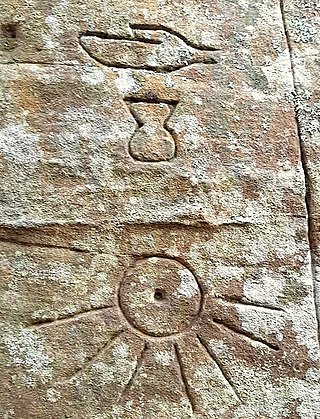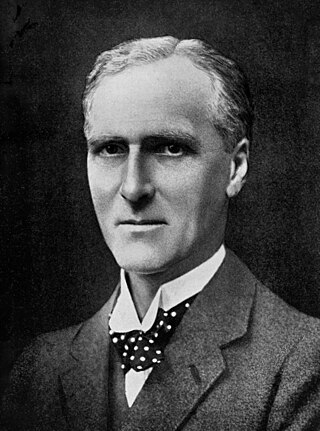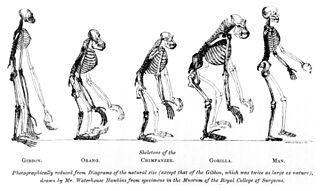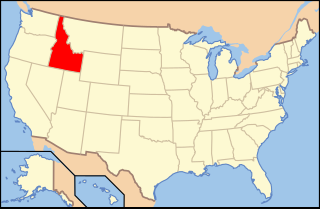
The Cenozoic is Earth's current geological era, representing the last 66 million years of Earth's history. It is characterised by the dominance of mammals, birds, and angiosperms. It is the latest of three geological eras, preceded by the Mesozoic and Paleozoic. The Cenozoic started with the Cretaceous–Paleogene extinction event, when many species, including the non-avian dinosaurs, became extinct in an event attributed by most experts to the impact of a large asteroid or other celestial body, the Chicxulub impactor.

The Piltdown Man was a paleoanthropological fraud in which bone fragments were presented as the fossilised remains of a previously unknown early human. Although there were doubts about its authenticity virtually from the beginning, the remains were still broadly accepted for many years, and the falsity of the hoax was only definitively demonstrated in 1953. An extensive scientific review in 2016 established that amateur archaeologist Charles Dawson was responsible for the fraudulent evidence.

An out-of-place artifact is an artifact of historical, archaeological, or paleontological interest to someone that is claimed to have been found in an unusual context, which someone claims to challenge conventional historical chronology by its presence in that context. Some people might think that those artifacts are too advanced for the technology known to have existed at the time, or that human presence existed at a time before humans are known to have existed. Other people might hypothesize about a contact between different cultures that is hard to account for with conventional historical understanding.

A mastodon is a member of the genus Mammut, which strictly defined, was endemic to North America and lived from the late Miocene to the early Holocene. Mastodons belong to the order Proboscidea, the same order as elephants and mammoths. Mammut is the type genus of the extinct family Mammutidae, which diverged from the ancestors of modern elephants at least 25 million years ago, during the Oligocene.

Young Earth creationism (YEC) is a form of creationism which holds as a central tenet that the Earth and its lifeforms were created by supernatural acts of the Abrahamic God between about 6,000 and 10,000 years ago. In its most widespread version, YEC is based on the religious belief in the inerrancy of certain literal interpretations of the Book of Genesis. Its primary adherents are Christians and Jews who believe that God created the Earth in six literal days. This is in contrast with old Earth creationism (OEC), which holds literal interpretations of Genesis that are compatible with the scientifically determined ages of the Earth and universe. It is also in contrast to theistic evolution, which posits that the scientific principles of evolution, the Big Bang, abiogenesis, solar nebular theory, age of the universe, and age of Earth are compatible with a metaphorical interpretation of the Genesis creation account.

Flood geology is a pseudoscientific attempt to interpret and reconcile geological features of the Earth in accordance with a literal belief in the Genesis flood narrative, the flood myth in the Hebrew Bible. In the early 19th century, diluvial geologists hypothesized that specific surface features provided evidence of a worldwide flood which had followed earlier geological eras; after further investigation they agreed that these features resulted from local floods or from glaciers. In the 20th century, young-Earth creationists revived flood geology as an overarching concept in their opposition to evolution, assuming a recent six-day Creation and cataclysmic geological changes during the biblical flood, and incorporating creationist explanations of the sequences of rock strata.

Archaeological forgery is the manufacture of supposedly ancient items that are sold to the antiquities market and may even end up in the collections of museums. It is related to art forgery.

Sir Arthur Keith FRS FRAI was a British anatomist and anthropologist, and a proponent of scientific racism. He was a fellow and later the Hunterian Professor and conservator of the Hunterian Museum of the Royal College of Surgeons of England. He was a strong proponent of the Piltdown Man, but conceded it to be a forgery shortly before his death.
Kenneth Page Oakley was an English physical anthropologist, palaeontologist and geologist.

Charles Dawson was a British amateur archaeologist who claimed to have made a number of archaeological and palaeontological discoveries that were later exposed as frauds. These forgeries included the Piltdown Man, a unique set of bones that he claimed to have found in 1912 in Sussex. Many technological methods such as fluorine testing indicate that this discovery was a hoax, and Dawson, the only one with the skill and knowledge to generate this forgery, was a major suspect.
Martin Alister Campbell Hinton FRS was a British zoologist.
Below are notable events in archaeology that occurred in 1866.

The Pithecometra principle or Pithecometra thesis describes the evolution of humans; the pithecometra law is analogous to the concept that "man evolved within apes" or "man descended from apes" as advocated by Thomas Henry Huxley.

The Creation Evidence Museum of Texas, originally Creation Evidences Museum, is a creationist museum in Glen Rose in Somervell County in central Texas, United States. Founded in 1984 by Carl Baugh for the purpose of researching and displaying exhibits that support creationism, it portrays the Earth as six thousand years old and humans coexisting with dinosaurs, disputing that the Earth is approximately 4.5 billion years old and dinosaurs became extinct 65.5 million years before human beings arose.

The Mt. Blanco Fossil Museum was a creationist museum in Crosbyton, Texas, United States, opened in 1998. Its motto was "Digging up the facts of God's Creation: One fossil at a time."

Paleontology in Idaho refers to paleontological research occurring within or conducted by people from the U.S. state of Idaho. The fossil record of Idaho spans much of the geologic column from the Precambrian onward. During the Precambrian, bacteria formed stromatolites while worms left behind trace fossils. The state was mostly covered by a shallow sea during the majority of the Paleozoic era. This sea became home to creatures like brachiopods, corals and trilobites. Idaho continued to be a largely marine environment through the Triassic and Jurassic periods of the Mesozoic era, when brachiopods, bryozoans, corals, ichthyosaurs and sharks inhabited the local waters. The eastern part of the state was dry land during the ensuing Cretaceous period when dinosaurs roamed the area and trees grew which would later form petrified wood.
The following events occurred in November 1953:

The coexistence of avian dinosaurs (birds) and humans is well established historically and in modern times. The coexistence of non-avian dinosaurs and humans exists only as a recurring motif in speculative fiction, because in the real world non-avian dinosaurs have at no point coexisted with humans.

The Nampa figurine is a 1.5-inch (38 mm) fired clay doll found near Nampa, Idaho, in 1889. The figurine has been dyed red, possibly due to iron oxide deposition, and depicts a female figure with jewelry and clothing. The artifact has been the subject of substantial controversy over its apparent age. While scholarly consensus today holds that the doll is a hoax, initial estimates of the artifact placed its age at 2 million years old, significantly outdating any other clay artifacts and humanity's arrival in the Americas.
Prehistoric Peeps was a 1905 British one-reeler film, directed by Lewin Fitzhamon and produced by the Hepworth Manufacturing Company. The only existing print has been preserved by the British Film Institute.















